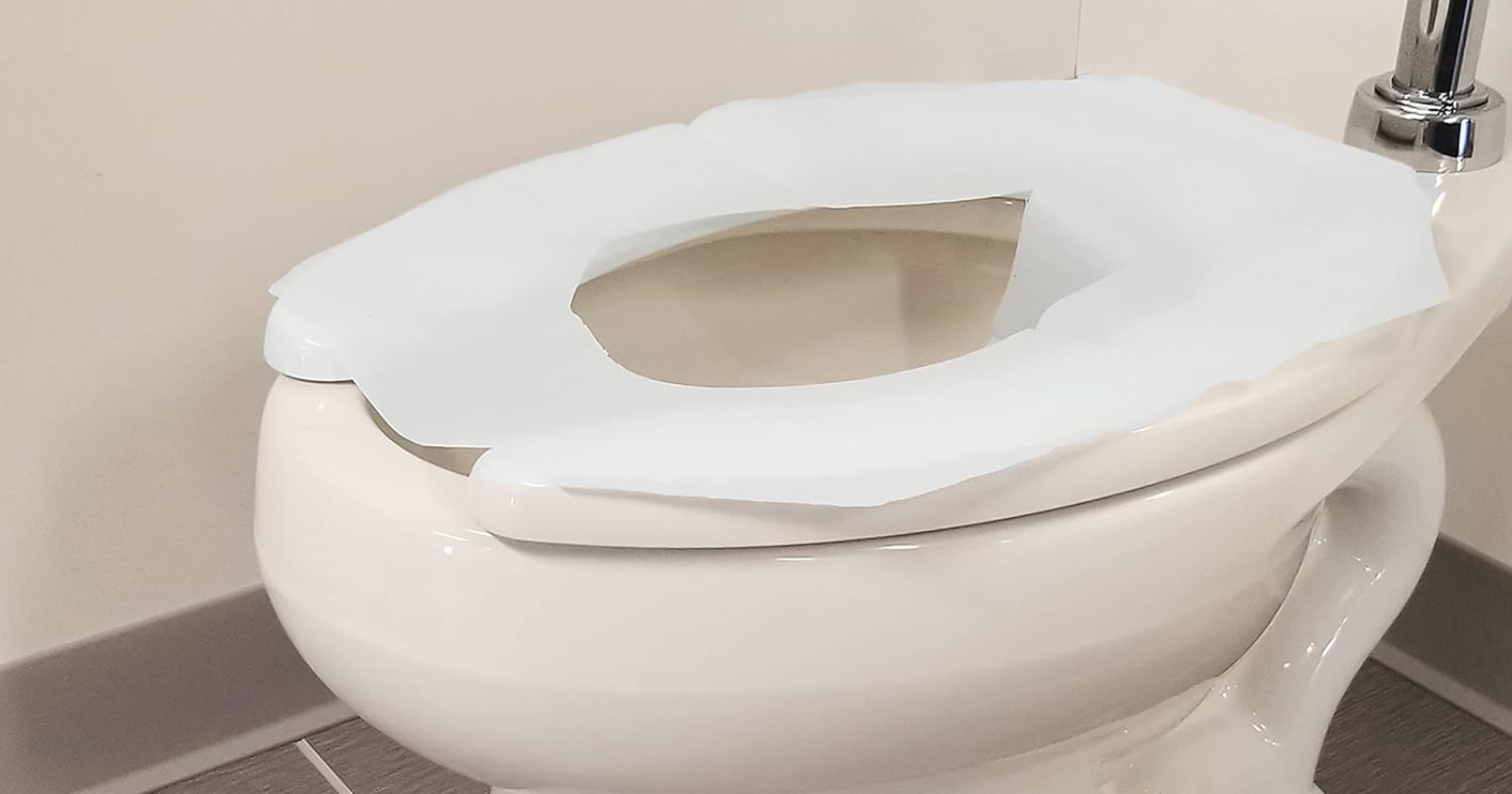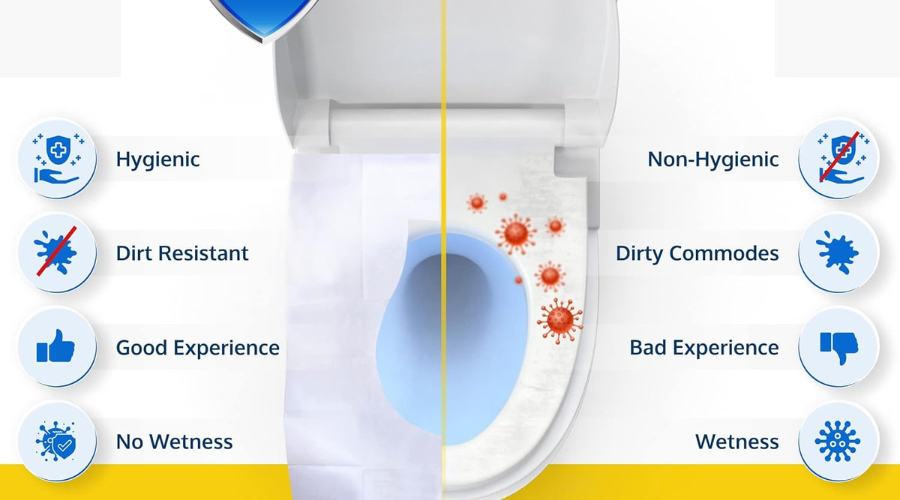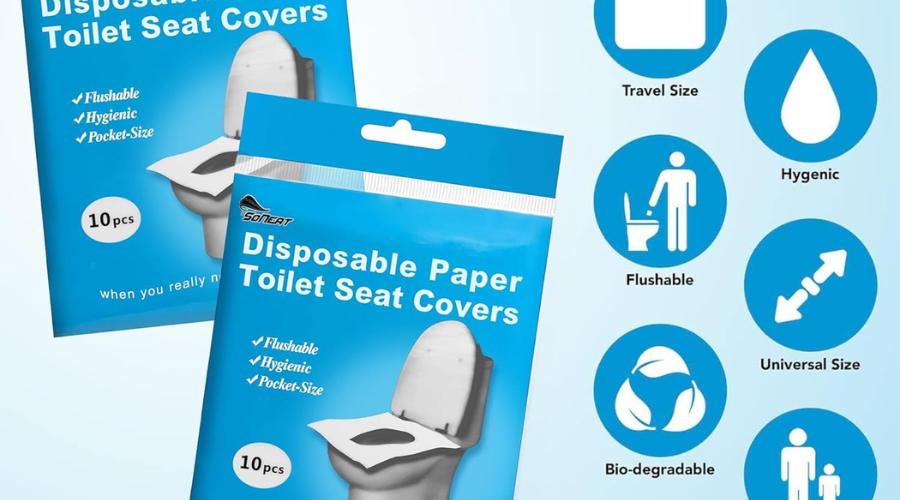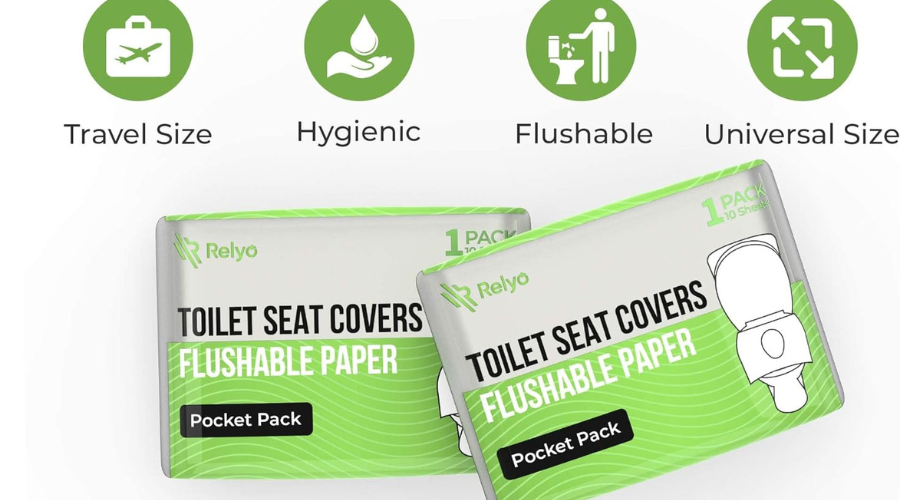
Can Toilet Seat Covers Be Flushed? Many of us have pondered this question in public restrooms or even at home. While toilet seat covers offer a sense of cleanliness and hygiene, understanding their proper disposal is crucial to avoid plumbing issues and environmental harm.
This article delves into whether toilet seat covers can be flushed, examining the materials they’re made from, the potential risks to plumbing systems, and the best practices for their disposal.

Understanding Toilet Seat Covers
Toilet seat covers are used in public restrooms to enhance hygiene and provide a barrier against germs. They come in various types and materials, each serving a specific purpose, especially in promoting cleanliness.
Types and Materials
Disposable toilet seat covers are common in public restrooms. Made from thin paper, they are designed to be used once and then flushed. These covers often feature biodegradable materials that dissolve in water, making disposal easier.
Washable toilet seat covers can be used repeatedly. They are often made from materials like cotton or faux fur, adding a decorative touch to bathrooms. These covers need regular washing to maintain hygiene and can be more environmentally friendly since they are reusable.
Decorative toilet seat covers are usually found in homes rather than public restrooms. They are designed with aesthetics in mind and can be made from various fabrics. While they improve the look of the bathroom, they also require frequent cleaning to prevent bacteria buildup due to their reusable nature.
Function as a Barrier Against Germs
Toilet seat covers provide a physical barrier between the user and the toilet seat. This barrier is crucial in public restrooms, where multiple people use the same facilities, increasing the risk of exposure to bacteria and germs.
Using a toilet seat cover can reduce contact with germs left by previous users. This helps maintain personal hygiene, especially in environments where cleanliness is questionable.
By placing a disposable cover on the seat, users minimize direct contact, which can be particularly important for those concerned about catching illnesses. While not foolproof, they add an extra layer of protection that can be reassuring for many people.

Can Toilet Seat Covers Be Flushed-The Plumbing Impact
Toilet seat covers are often labeled as disposable, but flushing them can lead to significant problems. Understanding the risks and proper methods of disposal is crucial for maintaining a functional plumbing system and avoiding environmental harm.
Risks of Flushing Seat Covers
Flushing toilet seat covers can lead to clogs in residential and public plumbing systems. Unlike toilet paper, paper toilet seat covers are designed to dissolve slowly. When flushed, they can accumulate in pipes, creating blockages that disrupt the flow of wastewater.
In homes with septic systems, flushed seat covers can settle in the septic tank, reducing its efficiency and potentially causing backups. Over time, these non-biodegradable materials can fill the tank, leading to costly repairs and maintenance. Moreover, in gravity-flush toilets, the flushing mechanism may not generate enough force to push seat covers through the pipes, increasing the chance of clogs.
Another concern is the environmental impact. Toilet seat covers that reach the sewage system can contribute to environmental pollution. Waste treatment plants may struggle to filter out these materials, which can end up contaminating water sources.
Proper Disposal Methods
Proper disposal of toilet seat covers is essential to prevent plumbing issues and environmental harm. The most straightforward method is to discard them in a lined trash bin. This practice ensures that the covers do not enter the plumbing system or the environment.
Public restrooms should provide visible and accessible trash bins near toilets. Signage encouraging proper disposal can also be helpful. Some flushable toilet seat covers are marketed as safe to flush, but verifying their effectiveness and safety for your plumbing system and septic tanks is important.
For homes with septic systems, always avoid flushing any material other than toilet paper. Even products labeled as flushable can cause clogging and damage. Instead, keep a waste bin nearby to dispose of seat covers and other non-flushable items conveniently.
Health Considerations and Hygiene Practices
Using toilet seat covers can help maintain hygiene and protect against certain health risks. Understanding the potential benefits and common misconceptions related to their usage is important.
Reducing Risks of STIs and Bacteria
Toilet seat covers can help reduce contact with bacteria and microorganisms that may be present on public toilet seats. While it’s rare to contract STIs from a toilet seat, the risk of encountering fecal bacteria or other pathogens is still present.
Minimizing direct contact with contaminated surfaces is crucial for those with open wounds or weakened immune systems. Public restrooms are prone to contamination due to high traffic. Using seat covers can add a layer of protection, lowering the chances of coming into contact with harmful microorganisms.
Despite their benefits, seat covers are not a foolproof solution. Good hygiene practices, such as washing hands thoroughly after using the restroom, are essential to reduce overall risk.
Hygiene Benefits and Misconceptions
Many people use toilet seat covers to avoid direct contact with public toilet seats, considering this a hygienic practice. These covers provide a barrier, especially in restrooms that are not frequently cleaned. They can also reduce contact with moist areas that may harbor bacteria.
However, most bacteria on a toilet seat are unlikely to cause serious health issues. The primary mode of disease transmission in public restrooms is through hand contact rather than the buttocks or thighs.
Cleaning habits such as washing hands and using toilet paper effectively are just as vital. Public health organizations emphasize these practices as critical to preventing the spread of germs and maintaining good hygiene.

Wrapping Up
Can Toilet Seat Covers Be Flushed? The answer is a resounding no. Flushing toilet seat covers can lead to clogged pipes, costly plumbing repairs, and environmental harm.
While these covers are convenient for maintaining hygiene, their proper disposal in trash bins is essential for keeping our plumbing systems running smoothly and protecting our environment.
Next time you reach for a toilet seat cover, remember to toss it in the trash. This will ensure a clean and clog-free bathroom experience for everyone.
Frequently Asked Questions
Flushing toilet seat covers is a common topic with several nuances, and it’s easy for people to make mistakes. I’ll answer the questions that pop up most frequently about the right way to use them.
How should you properly use a toilet seat cover?
When I use a toilet seat cover, I place it on the seat, ensuring that it covers the entire surface, which helps maintain sanitary conditions.
After I’m done, if the seat cover is designed to be flushable, I’ll toss it into the toilet and flush it away. It’s crucial to check if the cover is indeed flushable to avoid plumbing issues.
Which way does the flap go on a toilet seat cover?
The flap on a toilet seat cover is meant to hang into the front part of the toilet bowl. This setup helps ensure the cover is pulled into the bowl when I flush without the need for me to touch or adjust it manually.
Dive Deeper
- 3 Best Grab Bars with Toilet Paper Holder
- Cosvalve Smart Toilet Review
- The Best Toilet Bowl Cleaner For Calcium Buildup

